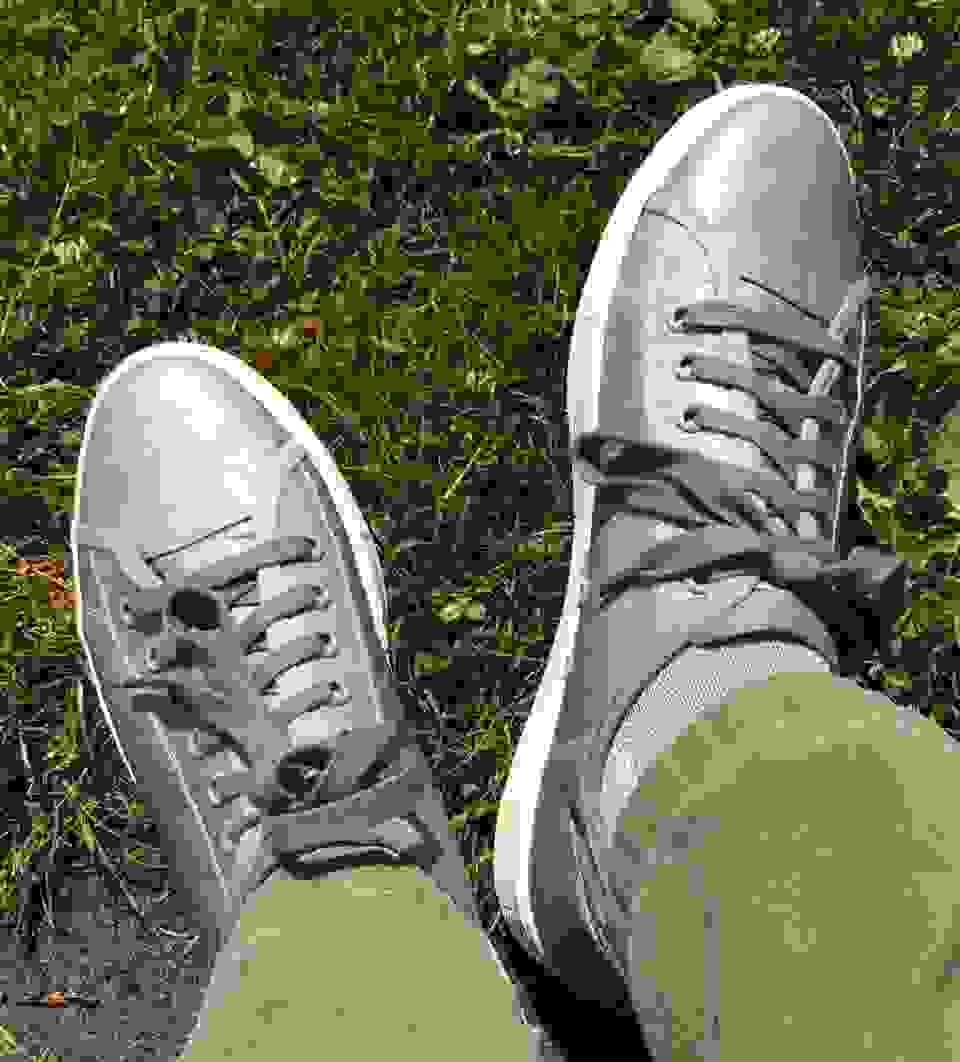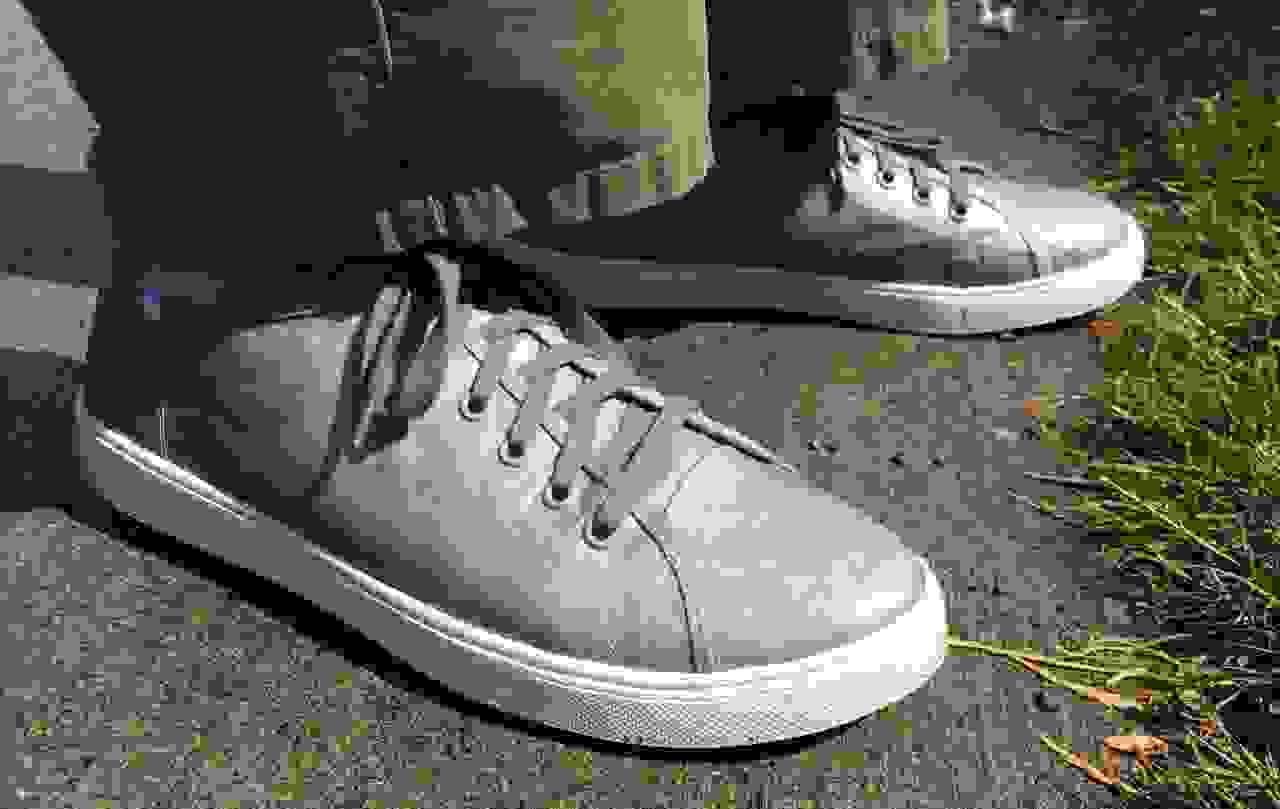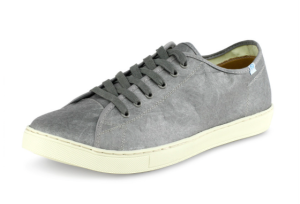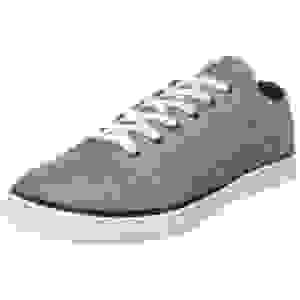For many years, I’ve advocated ferociously in favor of using just a single pair of shoes while traveling, in addition to a single pair of sandals or flip flops, to cut down on the nuisance of hauling massive amounts of gear around all day and rarely using them. If you bring shoes that look good and feel good, there’s no point in bringing anything else.
This is actually quite simple, particularly for men, who can pretty much pick out whichever pair of high-quality leather shoes they like, and call it a day. Well-built, attractive leather shoes will handle everything from a hike to a night out of failing to impress the ladies. Or gentlemen, for that matter.
But, for all their advantages, leather shoes are generally hotter and bulkier than I’d like them to be. I was willing to deal with these disadvantages in order to reap the rewards of not having to bring anything else (which I still think is a worthwhile trade for managing to achieve minimalist travel), but I was still on the lookout for something that might solve these problems without compromising other features.
And there’s a very promising alternative…which is Tyvek.

Advantages of Tyvek shoes
You’re probably more familiar with Tyvek as a construction material, used to block the rain from damaging a building while under construction, or as a rain cover for a car, or heavy-duty envelopes. Chemical protection suits, too.
But all those weather-protective features are exactly the sorts of things that can be especially useful when it comes to travel footwear.

Tyvek shoes are:
- Water-resistant: Tyvek is used to protect buildings from the elements while they’re still under construction, so they’ll keep the rain from soaking your toes. This is utterly wonderful when walking through wide-open spaces with no shelter, and Tyvek manages to do it more cheaply than certain alternatives. You can maximize this benefit by getting the styles with as few eyelets as possible, so that the toe area is seamlessly smooth, with nowhere for rain to sneak in.
- Breathable: And wow, they are really breathable. Better than some natural canvas fabric shoes of mine, which is surprising, given how water-resistant these are. I generally have a problem with sweatily overheating, even in mild weather, but these are vastly more breathable than I would have expected. Very happy with this.
- Durable: Tyvek is both tear-resistant and abrasion-resistant, so they’ll last much longer than cotton canvas alternatives. (Long-term update: Tyvek colors seem to be just surface treatments, so scratches on the surface can open up the non-colored material underneath, revealing small, white patches, so expect sharp rocks or other abrasion to leave some marks.)
- Light: Tyvek is literally paper-thin, making them exceptionally light, and easier to squish flat than bulky, rigid alternatives, like leather. There’s usually a soft fabric lining on the inside for added comfort, though.
- Smooth: This might not seem like a big deal, but it’s ridiculously difficult to get these things dirty, and they’ll clean up with a quick swipe. That’s nearly impossible with other fabrics, particularly cotton, and it’ll help you look presentable, even if you’re a scruffy backpacker.
- Recyclable and vegan: I was more concerned with the performance rather than the sustainability, but I’m more than happy to have these extra bonuses as well.
Basically…they’re the perfect material for lightweight travel shoes.

Disadvantages of Tyvek shoes
It’s not all roses and sunshine, however. Tyvek has some potential downsides, though I don’t consider any of them to be dealbreakers:
- Uncushioned fabric: This is probably the most significant potential problem, as the super-thin fabric can create pressure points, whereas cushioned shoes (like running shoes) do a better job conforming to the shape of individual feet. Just make sure to try them out to see how they feel. Keep in mind they’ll soften a bit after being worn a few times, though.
- Crinkles: The weathered, crushed paper appearance might not go over well with certain people, and when they’re brand new, they can make crinkly noises while you’re walking. This will also get better with time.
- Casual styling: Most of the Tyvek shoes I’ve seen are styled as brightly colored sneakers. You might not care the slightest bit about this, but they might be too casual for somewhat fancier settings. Just don’t be surprised if you get turned away from an upscale club because your shoes aren’t fancy enough for them and their snooty dress codes.
The Tyvek shoes currently available are quite similar in comfort and style to something like classic Converse or Vans: Thin, light, and casual, but with the added benefits of Tyvek described above. They’re not serious boots, but they’ll do just fine in most situations.
The only things I’d like to see in the future would be slightly fancier styles, for those who want something a little classier than sneakers (when it comes to travel, fashionable is actually functional), and the ability for the heel to fold down flat, making them effortless to pack. Otherwise I see no reason to use much else. A super tough, water resistant, lightweight, highly breathable, relatively packable pair of shoes is an ultralight backpacker’s dream come true.
Where to get them:
I’m currently aware of three companies that make Tyvek shoes, all of which offer multiple options for men and women:
- Unbelievable Testing Laboratory: Focusing on lightweight construction. They make wallets, too.
- Unstitched Utilities: Lots of styles, with a focus on sustainability.
- Civic Duty: As the name implies, charity is part of their business.
The ones I tried:
I generally hesitate to get too specific with options that are numerous and sometimes temporary, though I did try a couple different models, and I’m happy to share my thoughts on those.
Light Wing Franklin (from the UT Lab)

These are the shoes from the above photos, by the way.
The UT Lab seems to focus first and foremost on lightweight construction, which is especially useful for people carrying these in a pack while wearing something else. They’re lighter that any shoes I have ever used, and I’ve gotten compliments on the style as well. They also did a good job minimizing the typical Tyvek crinkle texture.
Sadly, I can’t say I was impressed with the quality of construction, or comfort. Of the several pairs I tried before getting the right size, I ran into several issues; eyelets that fell apart, stitching that came loose in several places, and entire sections where the upper wasn’t glued into the sole at all. All of these problems were fixable (and may have been isolated incidents), though it wasn’t particularly inspiring taking them out of the box and immediately feeling the need to break out the super glue.
The sole is also just not serious enough for all-day comfort. I could feel the concrete going right into my bones. I replaced the insoles with something better, but I think the problem might also be the super-flexible and super-thin outsole. But either way, I have another pair of similar-looking shoes that I’ve worn literally every day for the last three years, and are so worn out that you can poke a hole through the bottom, and they’re still vastly more comfortable than these.
They managed to fit pretty well, though. I decided to keep them, since the super glue and replacement insoles helped out quite a bit, but it was not particularly encouraging that they arrived with issues that needed immediate repair.
The Next Day Low (from Unstitched Utilities)

These are waaaaaaay more serious than UT Lab shoes, with better construction and more comfortable soles. They’ve also got treads, which I expect would last quite a bit longer than the super-thin and super-smooth UT Lab soles.
These are the sort of shoes that you could probably wear all day long and be fine. They’re not trying to be the lightest shoes in the world, because they’d rather be comfy instead.
On the downside, they didn’t quite fit me. They seemed a little wide, so I wasn’t able to get a pair that worked quite right for my skinny feet, but I was otherwise happy with the quality of construction and comfort. They’ve got lots of colors, too. Definitely a good place to look, even if they didn’t quite work for me.
You can find these on Amazon.
Conclusions and future prospects
All in all, I’m enthusiastic about the advantages of Tyvek shoes for ultralight backpacking, as the combination of durability, water resistance, breathability, packability, and minimal weight are absolutely spectacular for anyone who’s ever gotten stuck with big, heavy, bulky, burning hot shoes.
Current options tend to be decidedly casual, which may or may not suit your particular fashion sense, but it’s still an early development from which we may see future options covering more ground. I think they’d look great in natural colors too, as the crinkly texture would mimic a weathered leather look that would be quite attractive, and is also fun to say.
But in the meantime, they’re still a pretty solid option for bringing only one pair of shoes, even for long-term travel, which is great for anyone trying to pack ultralight. They’re definitely worth checking out.




These shoes look great, especially the Unstitched Utilities ones! Any idea if they can be bought in-store anywhere, or are they just available online?
I wasn’t able to find any of them anywhere in person, so of course I had to order three different sizes and return two of them. Oh well though. It worked out.
Ah okay, thanks for your response!
u should try Radler Trail Camp, a unique outdoors shoe from Timberland. Been using those pair of shoe for every backpacking :) & i always backpack light for travelling. It can be fold & dry fast. Its comfy for long walk, even hiking & u can wear to the club also :P
check out the activist line of shoes from patagonia. evolving from the climbing shoe wanna-be, they have become a great lightweight travel shoes for different climates.
cheers, janet
Do you have any thoughts on suitable footwear for more hiking-intensive backpacking trips such as the Camino de Santiago? Ideally I would like to be able to stick to light footwear, but it seems like a lot of people make a big deal out of ankle support and waterproofing, both of which I’m not too familiar with due to my proclivity towards slipper-like shoes.
If you get stuck in the rain, waterproof shoes are a huge deal (anything with Gore-Tex will be guaranteed to be waterproof, so just go into a hiking store and try those out). As for ankle support, it is generally recommended for serious hiking, because while you’re walking along on uneven trails, you could easily roll your ankle, and tall hiking boots will protect against that. So although it’s possible to hike in normal shoes, I’d probably only recommend that for a day or two, whereas something like the Camino de Santiago, which will involve hiking pretty much every day, you’re probably better off investing in a pair of high-quality hiking shoes, which will cost you about $100-$150, but they’ll probably last for a decade or two, depending on how often you go hiking.
I don’t have much experience with serious hiking shoes, but even if I had brands to recommend, feet have all sorts of different shapes, so really the only way to do it is to head down to the camping store and try out a dozen different pairs and see what feels good. They do have lightweight options, though. Just expect to spend a few hours in there, to make sure you find a comfy pair.
Hey Snarky,
Im leaving in just over 2 weeks on a 6 month trip to Eastern Europe (cold) and Southeast Asia (hot) and still trying to figure out my shoes situation. My last 3 month trip I just had a pair of black boots and sandals but Im trying to see if I can get lightweight shoes that flatten down for easy packing.
Have you seen the updated Argonauts by The UT Lab:
http://theutlab.com/collections/the-argonaut/products/argonaut-explorer-brown#
Or the Primal 2’s by Lem’s shoes:
http://www.lemsshoes.com/mens-primal-2-slate.html
Or the Fast Lanes by Unstitched Utilities:
http://unstitchedutilities.com/products/tyvek/fast-lane-5
I would appreciate your opinion on these or a possibly way to pack in a boot, shoe and sandal. The only way I see is by buying lightweight that can be packed flat.
I only have experience with UT Lab shoes (not comfy for me), but not their boots, and a pair of Unstitched Utilities, which I did find comfy, though not the model you mention. Shoes are a difficult place to cut corners, since you’ll be walking around in them all the time, so if you can do it, maybe order all three and return the two you don’t like (and maybe tell a friend you might need him to do it for you if you run out of time before you leave).
Yeah I think Ill do that. Were the unstitched utilities comfortable enough to walk a city all day for several days in? Have you made a 3 shoe trek lately? What would you bring? I mean, Ill literally be going from the mountains to the beach to the jungles to the dance club. Very hard to lump all that into two shoes, but maybe easier for three.
I actually don’t have a favorite right now. Tyvek shoes look really crinkly, and very sneaker-like, and I usually try to find something a little more upscale. That’s why I didn’t keep the Unstitched Utilities, but standing in them was a million times better than the UT Lab options.
At this point, if you need something tough and also something light and breathable, two pairs of shoes plus sandals is probably fine; I generally try to bring just one pair of shoes, but that works better for not-too-variable weather. I also don’t quite have a favorite shoe at this point. Still looking for something all-purpose, but I think a leather sneaker or leather casual shoe works quite well for just about anything.